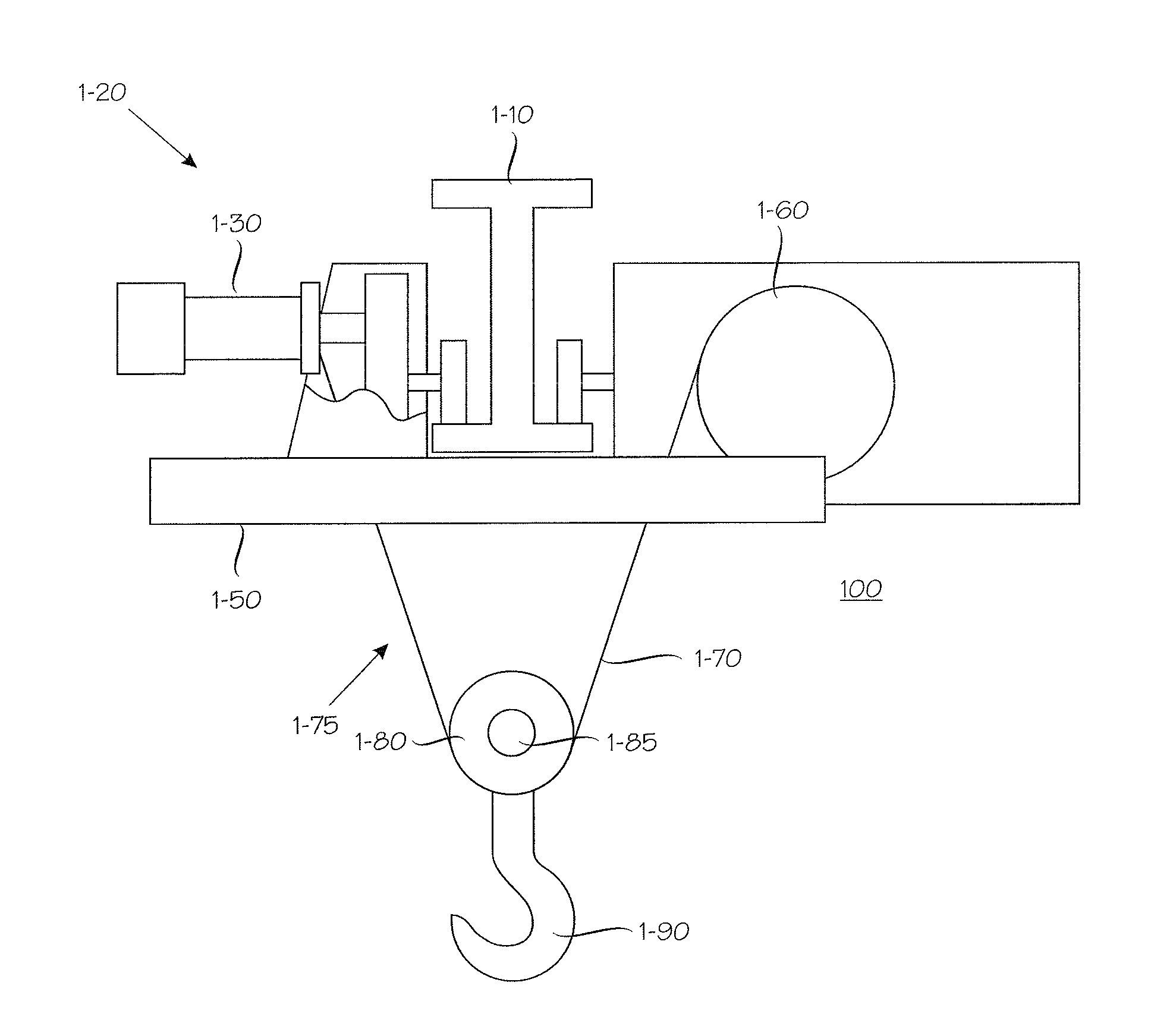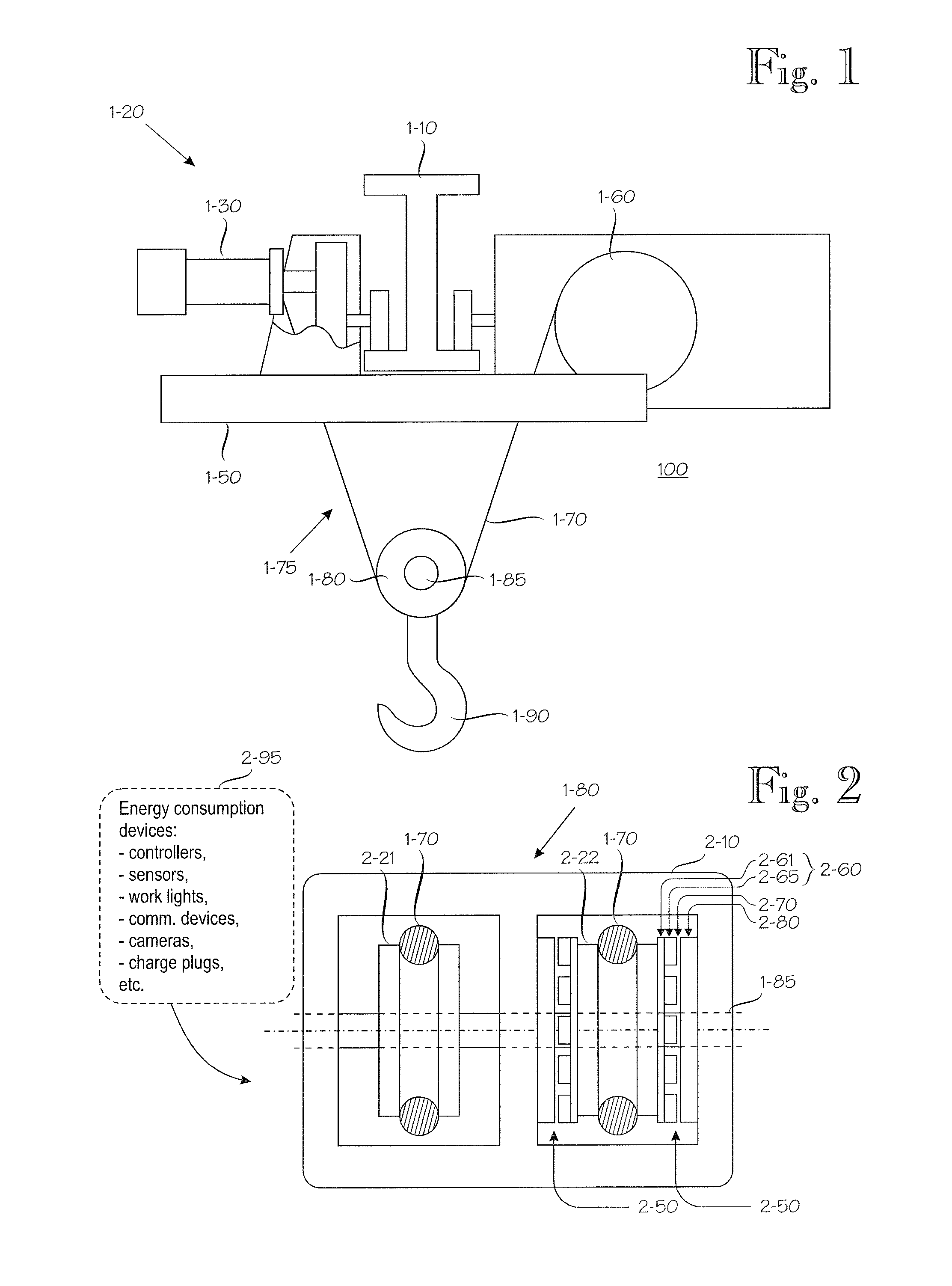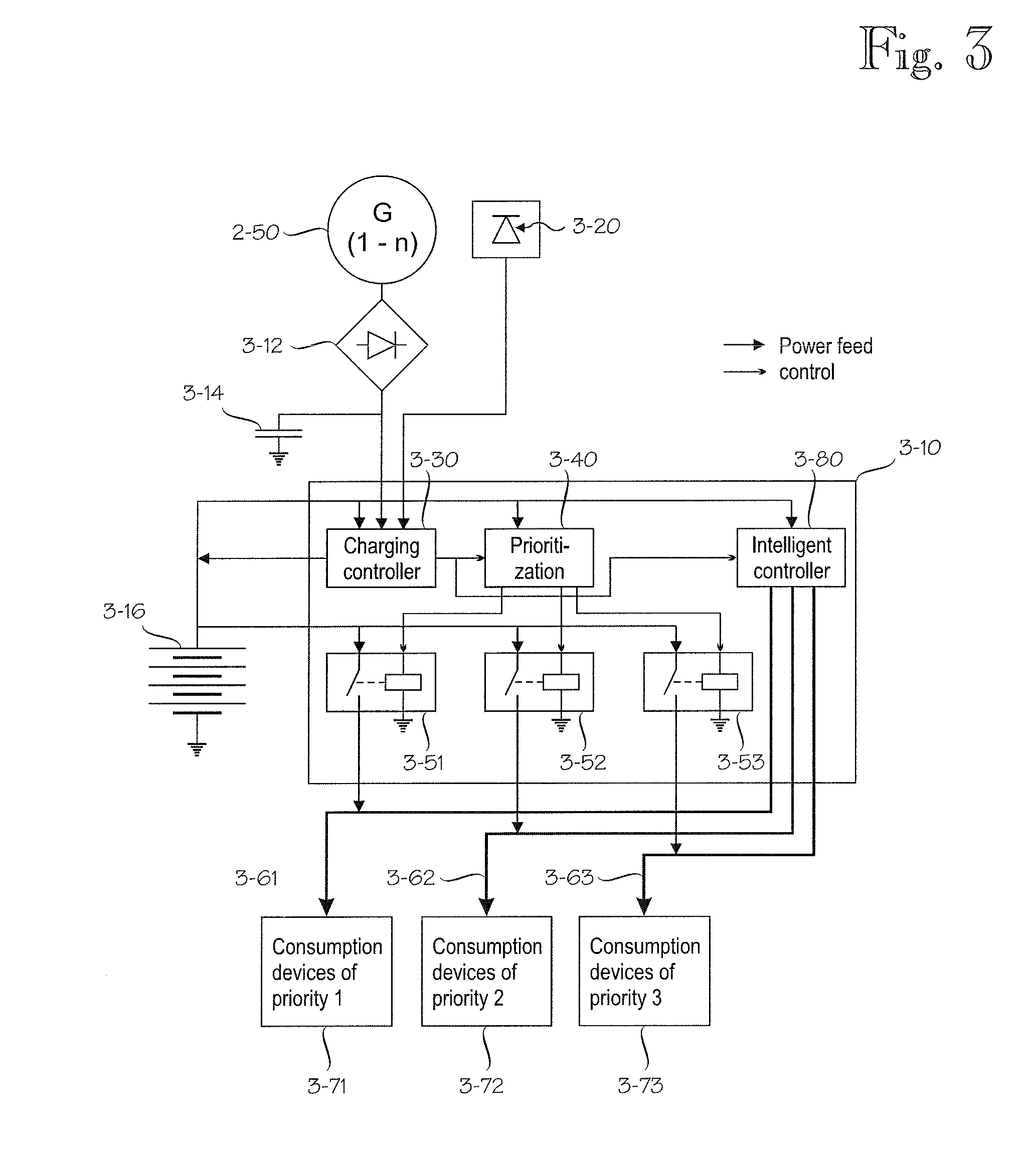Apparatus and method in connection with crane sheave
a technology of apparatus and crane, applied in the direction of dynamo-electric machines, dc source parallel operation, ac network voltage adjustment, etc., can solve the problems of difficult power supply connection with the hook, high cost of custom-made cables, and easy wear and stress of cables, so as to prevent overcharging and facilitate working with cranes , the effect of preventing overcharging
- Summary
- Abstract
- Description
- Claims
- Application Information
AI Technical Summary
Benefits of technology
Problems solved by technology
Method used
Image
Examples
Embodiment Construction
[0062]FIG. 1 shows the main parts of an exemplary crane. The hoisting machine is generally denoted by reference numeral 100. In this example, the crane frame comprises a girder 1-10, in the longitudinal direction of which travels a trolley 1-20 driven by a motor 1-30. The body 1-50 of the trolley supports a hoist motor 1-60, which lifts and lowers, via tackle 1-70, elements indicated generally by reference numeral 1-75 and comprising a sheave arrangement 1-80 and a load-fixing means 1-90 rising and lowering with it, such as a hook, clamshell or catch. Many conventional elements of the hoisting machine, such as different rope drums, are not described in more detail. From the point of view of the invention, the most interesting element is the sheave arrangement 1-80 described in more detail in FIG. 2. Reference numeral 1-85 denotes the shaft of the sheave system.
[0063]FIG. 2 shows positioning the parts of an energy collector in a load-fixing means provided with a sheave in accordance ...
PUM
 Login to View More
Login to View More Abstract
Description
Claims
Application Information
 Login to View More
Login to View More - R&D
- Intellectual Property
- Life Sciences
- Materials
- Tech Scout
- Unparalleled Data Quality
- Higher Quality Content
- 60% Fewer Hallucinations
Browse by: Latest US Patents, China's latest patents, Technical Efficacy Thesaurus, Application Domain, Technology Topic, Popular Technical Reports.
© 2025 PatSnap. All rights reserved.Legal|Privacy policy|Modern Slavery Act Transparency Statement|Sitemap|About US| Contact US: help@patsnap.com



